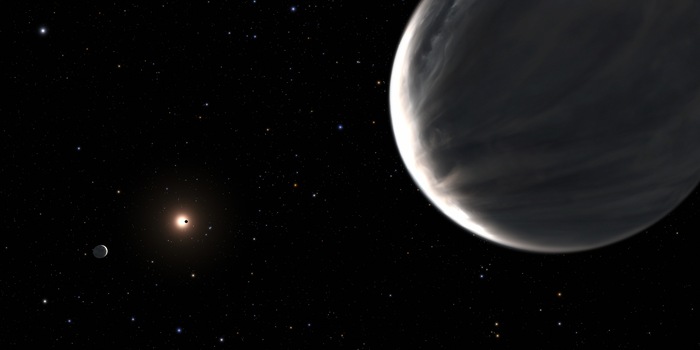
Exoplanets: Two special water worlds tracked down
The exotic parade of exoplanets never ceases to deliver new peculiarities. The twin pair Kepler-138 c and d now fascinates with an unusual composition.
At a distance of "only" 218 light years, two exoplanets are travelling through space that appear to be exceptionally rich in water: Kepler-138 c and d may have oceans that could be up to 500 times deeper than terrestrial seas. This is reported by Caroline Piaulet from the University of Montreal and her team in "Nature Astronomy".
When the two worlds were first observed in 2014, the data suggested that although they were different, they were both rocky super-Earths. In the meantime, Piaulet's research group has looked at them again using the Hubble and Spitzer space telescopes and the Keck Observatory in Hawaii - and has now come to a different conclusion.
Firstly, the astronomers detected another exoplanet around Kepler-138, which is therefore orbited by at least four celestial bodies. And when this new exoplanet is taken into account in simulations, it turns out that Kepler-138 c and d are far more similar to each other than previously thought. Each of them is slightly more than twice as heavy as the Earth and has around 1.5 times the Earth's radius.
Piaulet and co fed this data into a model that produced an impressive result. According to the model, up to half of the volume of each planet consists of something lighter than rock, but heavier than hydrogen and helium, which predominate in the envelope of gaseous planets. This is most likely to be water, the team writes.
The best comparison would be some of the icy moons in the outer solar system, which are also mostly water and surround a rocky core. "Imagine larger versions of Europa or Enceladus orbiting Jupiter and Saturn, but much closer to their star," says Piaulet. "Instead of an icy surface, they would harbour large envelopes of water vapour."
Because of the proximity to their star, a red dwarf, the researchers also consider life to be rather unlikely - especially as the oceans could only resemble those on Earth to a limited extent. "The temperature in the atmosphere of Kepler-138 d is probably above the boiling point of water, and we expect a thick, dense atmosphere of vapour on this planet. However, under this vapour atmosphere there could possibly be liquid water under high pressure or even water in a different phase," says Piaulet. The working group estimates the temperatures under the dense water vapour envelope at over 200 degrees Celsius; the pressure would be at least 100 times higher than the surface pressure on Earth - perhaps even 1000 times higher.
The picture of the two other planets in this system is also clearer after the investigation: the planet closest to the star, Kepler-138b, is demonstrably a small planet with the mass of Mars and therefore one of the smallest exoplanets known to date. Kepler-138 e, on the other hand, is small and further away from its star than the other three: It would take 38 days to orbit it. However, it does not appear to orbit its star. That is why its nature is still unknown.
Spectrum of Science
We are partners of Spektrum der Wissenschaft and want to make well-founded information more accessible to you. Follow Spektrum der Wissenschaft if you like the articles.
[[small:]]
Cover image: NASA, ESA, L. Hustak (STScI)
Experts from science and research report on the latest findings in their fields – competent, authentic and comprehensible.